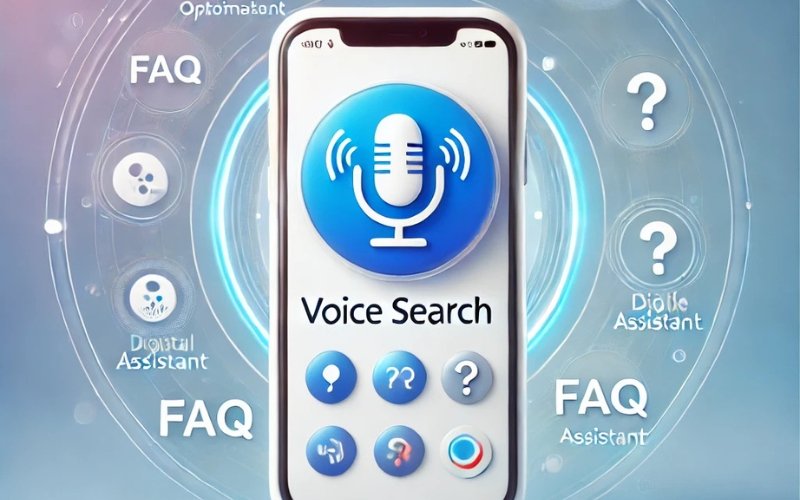Once a small e-commerce business has crafted an affordable SEO strategy, the next critical step is implementation. The key to successful SEO lies not only in planning but in executing each element of the strategy with precision. In this article, we will explore how a small e-commerce business can effectively implement an SEO strategy and gradually improve its online presence, rankings, and traffic.
Optimized Blog Content for Organic Growth

One of the most impactful components of a well-rounded and affordable SEO strategy is content marketing. Blog content plays a pivotal role in driving organic growth, particularly when it is optimized for long-tail keywords. These specific keyword phrases reflect what customers are searching for, often indicating higher purchase intent while facing less competition. By focusing on these terms, businesses can achieve sustainable growth in search rankings and traffic.
Targeting Long-Tail Keywords
To begin implementing a successful SEO strategy, e-commerce businesses should concentrate on creating blog content centered around long-tail keywords. For instance, if the business specializes in eco-friendly home decor, a blog titled “5 Tips for Creating a Sustainable Home” can target long-tail keywords like “sustainable home decor.” These niche-focused terms align with user intent and increase the chances of attracting qualified leads. Including the keyword naturally in the title, headers, meta descriptions, and body content ensures the blog post is optimized for search engines without keyword stuffing.
Long-tail keywords are an essential part of an SEO strategy because they capture more specific queries. A customer searching for “eco-friendly living room ideas” is likely further along in their decision-making process compared to someone searching for a broad term like “home decor.” Blogs that address these specific needs not only improve rankings but also increase the likelihood of converting readers into customers.
Creating Value-Driven Content
A successful SEO strategy hinges on the value provided to the audience. Each blog post should aim to solve a problem, answer a question, or offer unique insights. For example, a post like “How to Choose Sustainable Furniture for Your Home” could include practical tips and links to related product pages. Internal linking not only helps guide readers through the sales funnel but also enhances the site’s SEO by creating a stronger site architecture.
Additionally, businesses can enrich their content with visuals, such as infographics or product images, to increase user engagement. These multimedia elements make the content more appealing and improve time-on-page metrics, both of which are critical components of a robust SEO strategy.
Consistency for Long-Term Results
Publishing consistent, high-quality blog posts is a cornerstone of any effective SEO strategy. Regular updates signal to search engines that the website is active and relevant, increasing its chances of ranking higher over time. Moreover, as the blog gains authority, it can target more competitive keywords, amplifying its organic reach.
Consistency also builds trust with the audience. When users find reliable, informative content on your website, they’re more likely to return and engage with your brand. This trust translates into better user engagement metrics, which further enhance your SEO strategy by signaling to search engines that your site is valuable to its visitors.
On-Page Optimization for Product Pages

On-page optimization is a critical element of any successful SEO strategy, especially when it comes to product pages. These pages are often the primary entry points for potential customers, and optimizing them ensures better visibility in search engine results, leading to increased traffic and conversions. Below, we delve deeper into the various components of on-page optimization for product pages and how they contribute to a robust SEO strategy.
Title Tags and Meta Descriptions
A well-crafted title tag and meta description are fundamental to your SEO strategy. The title tag should be concise, descriptive, and include the primary keyword for the product. For example, if the product is an eco-friendly handmade rug, a title tag like “Eco-Friendly Handmade Rug – Sustainable Home Decor” not only highlights the product’s key attributes but also appeals to search engine algorithms.
Meta descriptions are equally important as they serve to attract users from the search results page. A strong meta description, such as “Discover our handmade eco-friendly rugs, perfect for creating a sustainable home. Free shipping available,” incorporates relevant keywords while encouraging clicks. Both title tags and meta descriptions should reflect the product’s unique selling points to align with your overall SEO strategy.
Keyword-Rich Product Descriptions
Product descriptions should not only inform but also persuade. This is where your SEO strategy intersects with your marketing goals. Each product description must include relevant keywords naturally while emphasizing unique features like eco-friendliness, sustainability, or handmade craftsmanship. For instance, phrases like “crafted from 100% natural materials” or “designed to complement a sustainable lifestyle” make the content both engaging and optimized.
Avoid keyword stuffing, as it can lead to penalties from search engines. Instead, use keywords in a natural, conversational tone that enhances readability. A well-written description not only boosts your SEO strategy but also builds trust with potential buyers.
Optimizing Images for SEO
Images are an essential part of any product page, and optimizing them is a crucial aspect of your SEO strategy. High-quality visuals attract customers, while optimized file names and alt text descriptions help search engines understand the image content. For example, instead of a generic file name like “IMG123.jpg,” use something descriptive like “eco-friendly-handmade-rug.jpg.” Alt text can further enhance visibility by including keywords like “handmade rug for sustainable home decor.”
Additionally, compressing image files without compromising quality ensures faster page load times, which is another critical ranking factor in any SEO strategy.
Internal Linking to Boost Navigation and Rankings
Internal linking is a powerful tool for enhancing your SEO strategy. Linking product pages to related products or blog posts improves navigation and helps search engines understand the relationship between pages. For instance, linking an eco-friendly rug product page to a blog post about sustainable home decor ideas can drive more traffic and improve engagement metrics.
Strategic internal linking also distributes link equity across your site, boosting the authority of individual pages. By connecting your content effectively, you strengthen your overall SEO strategy and enhance the user experience.
User Experience and Mobile Optimization
A great SEO strategy for product pages doesn’t stop at keywords and links—it extends to the user experience. Ensure your pages are mobile-friendly, load quickly, and have intuitive navigation. Responsive design and clear calls-to-action (CTAs) guide users seamlessly through the purchase process, reducing bounce rates and increasing conversions.
Building Authority with Backlinks

Backlinking is a crucial part of SEO implementation, as it signals to search engines that other websites view your content as valuable. Although acquiring backlinks can be challenging, small businesses can start by engaging in outreach to relevant blogs, forums, and niche directories.
One effective method is creating valuable content, such as blog posts or guides, that others may want to reference. By offering guest posts to industry blogs or participating in niche forums, businesses can build relationships that lead to backlinks. Additionally, submitting the site to eco-friendly directories or local business listings is a low-cost method of gaining backlinks.
Monitoring Progress and Making Adjustments
SEO is not a one-time task but an ongoing process. After implementing the strategy, it is essential to monitor its performance regularly. This involves tracking keyword rankings, organic traffic, and conversions using tools like Google Analytics and Google Search Console.
If a particular keyword is not performing well, the business can adjust the content or shift focus to another long-tail keyword. Continuous improvements to the website’s structure, content, and backlinks are necessary to maintain and improve rankings.
Leveraging Social Media for Amplification
While social media doesn’t directly impact SEO rankings, it can be an effective way to amplify SEO efforts. Sharing optimized blog posts and product pages on platforms like Instagram, Pinterest, or Facebook can help drive traffic back to the website, indirectly improving its search rankings over time.
Conclusion
Implementing an SEO strategy for a small e-commerce business requires careful execution of each element. From creating optimized blog content and product pages to building backlinks and monitoring performance, the implementation phase is where the true growth begins. By staying consistent, making adjustments as needed, and leveraging social media, small businesses can gradually improve their organic search presence and compete with larger players in the market.

